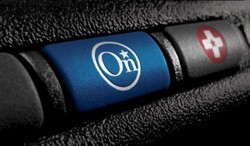 In the event of a crash, vehicle sensors gather up information and connects an OnStar adviser to a vehicle. OnStar can then contact emergency services and provide information regarding the severity of the crash, with information about airbags deployed and type of impact.
In the event of a crash, vehicle sensors gather up information and connects an OnStar adviser to a vehicle. OnStar can then contact emergency services and provide information regarding the severity of the crash, with information about airbags deployed and type of impact.
In the past, OnStar advisers would have to give emergency services a detailed description of the location of the accident.
Subscribers to the telematics system will benefit from new technology that will enable OnStar to electronically transmit precise longitude and longitude coordinates directly to the 911 center. Where available, the Automatic Location Identification (ALI) data display will show the authorities exactly where you're located, with almost zero opportunity for error.
While OnStar didn't always sound like such a great deal, real-time directions and accident assist makes it a near must have for anyone owning a GM vehicle. Now GM just needs to sell the service to other automakers so the General can make a tidy profit off of its investment. Hit the jump to see the GM OnStar press release.
PRESS RELEASE:
DETROIT - An enhancement to its flagship emergency services will enable OnStar to electronically transmit precise longitude and latitude vehicle location data directly to 911 centers to increase the speed and accuracy of emergency response to its subscribers. Currently this information is relayed verbally by OnStar advisors to the Public Safety Answering Point (PSAP).
OnStar, the industry leader in vehicle safety, security and communications services, uses advanced vehicle-based Global Positioning Satellite (GPS) technology to generate a vehicle's precise location during an emergency call.
This GPS location identifies the street names, cross streets and precise x-y coordinates of an emergency call so that help is immediately dispatched to the exact location. With this newest OnStar enhancement, 911 centers can automatically receive specific vehicle location information (longitude and latitude) in the 911 Automatic Location Identification (ALI) data display which may interface with a sophisticated mapping system used in many jurisdictions to expedite locating emergency victims.
"In an emergency, accurate location is the most important piece of information to ensure that help arrives promptly at the scene," said Cathy McCormick, Emergency and Security Service Line manager, OnStar.
In addition to providing location information, OnStar advisors continue to play an important role in providing critical crash and other emergency-related information directly to dispatchers to help them determine the most appropriate response.
"The Association of Public Safety Communications Officials has worked with telematics providers since their inception to use the latest technology to assist public safety in saving lives," said Chris Fischer, president, APCO International. "This technology interfaces with the systems many of our centers have in place already to expedite response."
With OnStar's Priority Access program, many PSAPs already receive OnStar emergency calls through an existing 911 trunk line. By routing verified emergency calls to 911 trunk lines, dispatchers will not only receive OnStar calls more quickly, they will also receive important call-related data, including OnStar's PSAP-only callback number.
OnStar's dedication to innovation for Emergency Services has continued to evolve since it first introduced Air Bag Notification in 1996. For example, today's Automatic Crash Response uses built-in vehicle sensors to connect an Advisor into a vehicle after a crash, regardless of air bag deployment. The sensors also provide real-time data about the type and severity of the crash to OnStar, and the Advisor can relay the data including the number, direction and severity of impacts as well as air bag deployment status to emergency responders so they can be better prepared to help when they arrive at the scene.


Sign in to post
Please sign in to leave a comment.
Continue